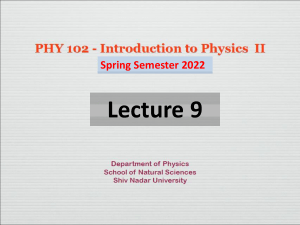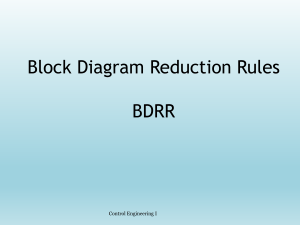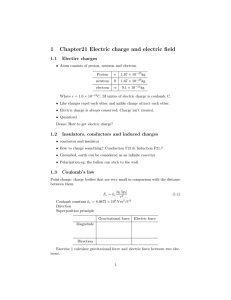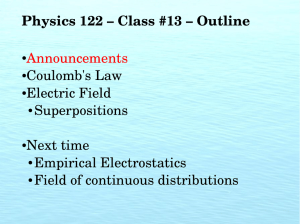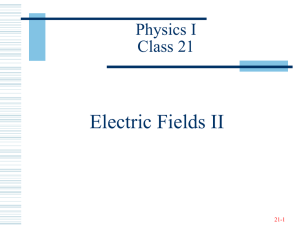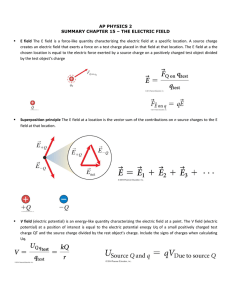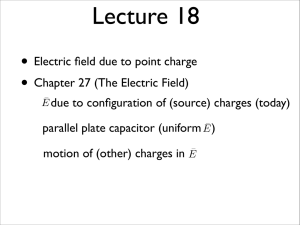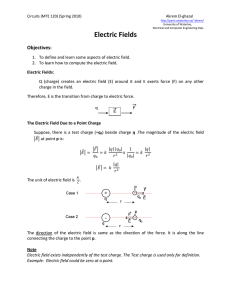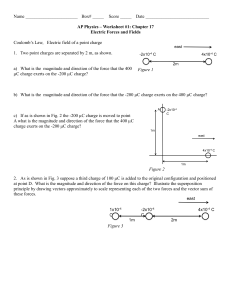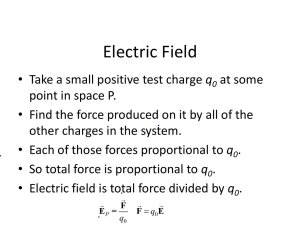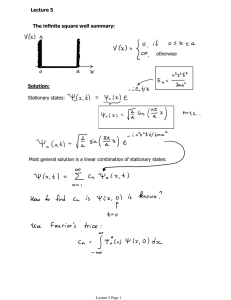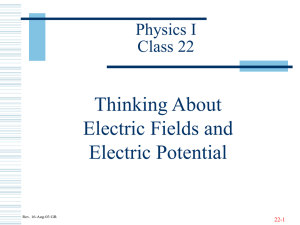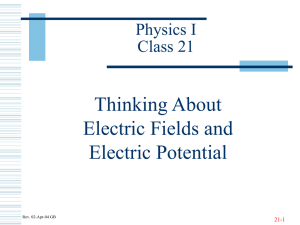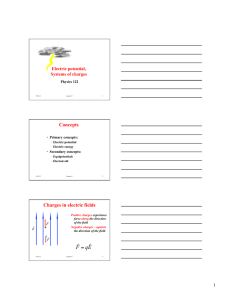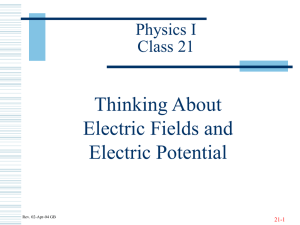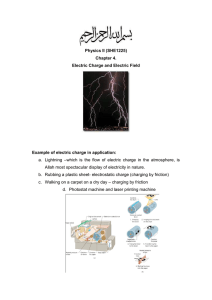1) The following graph shows two point particles with charges of... 10
advertisement
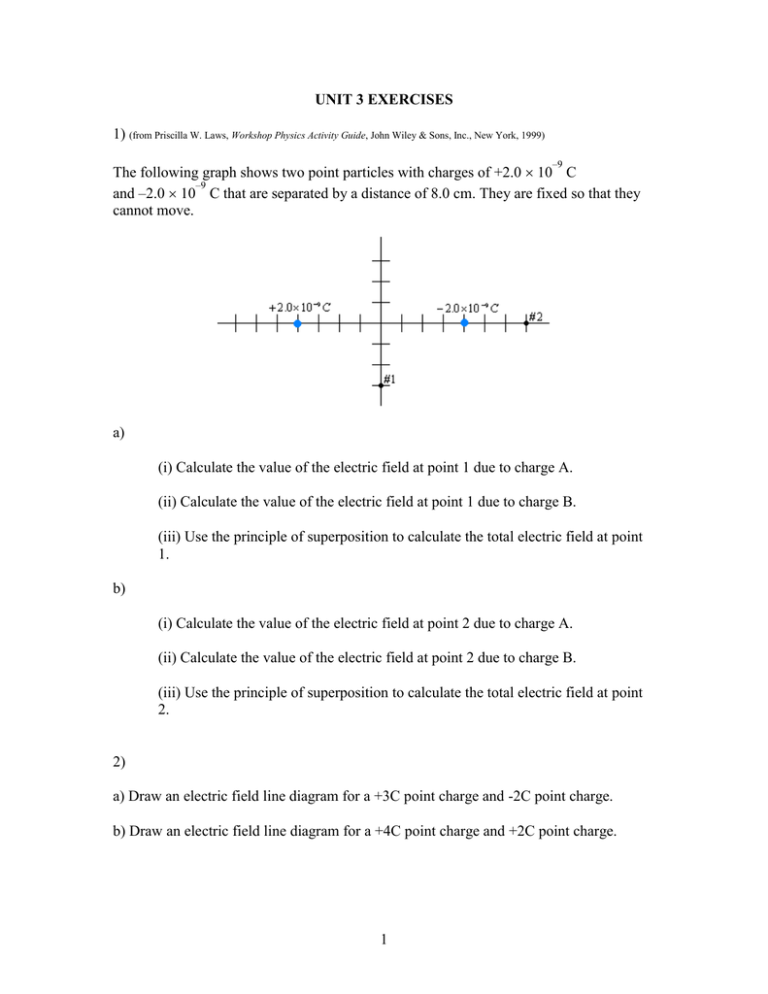
UNIT 3 EXERCISES 1) (from Priscilla W. Laws, Workshop Physics Activity Guide, John Wiley & Sons, Inc., New York, 1999) –9 The following graph shows two point particles with charges of +2.0 10 C –9 and –2.0 10 C that are separated by a distance of 8.0 cm. They are fixed so that they cannot move. a) (i) Calculate the value of the electric field at point 1 due to charge A. (ii) Calculate the value of the electric field at point 1 due to charge B. (iii) Use the principle of superposition to calculate the total electric field at point 1. b) (i) Calculate the value of the electric field at point 2 due to charge A. (ii) Calculate the value of the electric field at point 2 due to charge B. (iii) Use the principle of superposition to calculate the total electric field at point 2. 2) a) Draw an electric field line diagram for a +3C point charge and -2C point charge. b) Draw an electric field line diagram for a +4C point charge and +2C point charge. 1 3) In the diagram below, two pieces of metal are shown. The top piece has a net positive charge and the bottom piece has a net negative charge as shown. Points A, B, and C indicate points in space, not charges. a) Draw the electric field lines in the diagram below. b) Rank the magnitude of the electric field at points A, B, and C. Explain your ranking. 2

